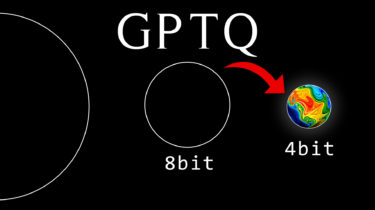4-bit LLM Quantization with GPTQ
Recent advancements in weight quantization allow us to run massive large language models on consumer hardware, like a LLaMA-30B model on an RTX 3090 GPU. This is possible thanks to novel 4-bit quantization techniques with minimal performance degradation, like GPTQ, GGML, and NF4. In the previous article, we introduced naïve 8-bit quantization techniques and the excellent LLM.int8(). In this article, we will explore the popular GPTQ algorithm to understand how it works and implement it using the AutoGPTQ library. You […]
Read more



